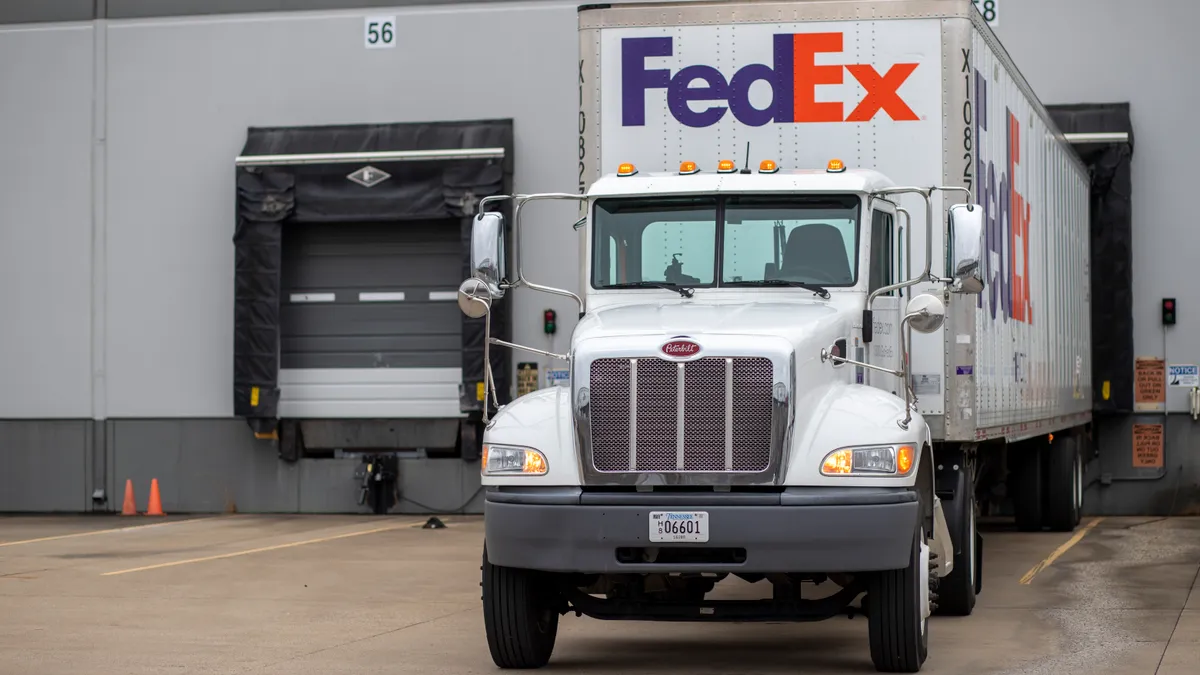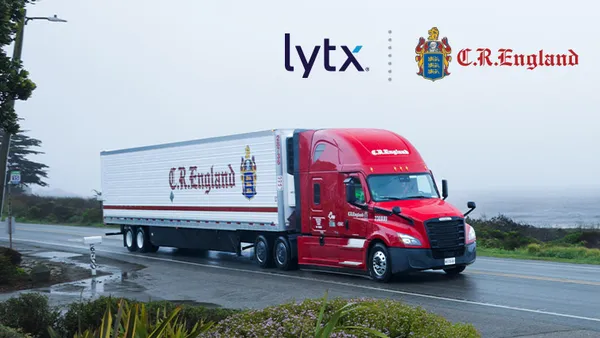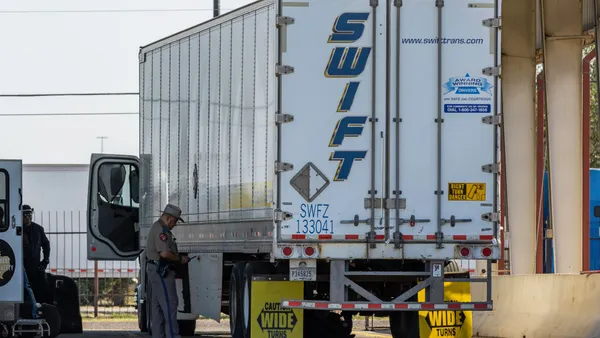Dive Brief:
- TL and LTL fleets are facing challenges in fully restoring their operations after pandemic-related shutdowns and slowdowns in shipper business, according to a market report from Transplace.
- Layoffs and furloughs in March and April ranged between 5% to 20% of LTL workforce, the report said, with most fleets averaging a 14% cut in headcounts. As businesses reopened, LTL carriers, in particular, started bringing back drivers and workers in June, but they struggled to reinstate personnel at the same pace as freight volumes expanded, Transplace reported.
- Other impacts from COVID-19 are new safety procedures on shippers and carriers. The changes, implemented to keep people apart and create social distancing, "is decreasing driver utilization, decreasing overall service, and increasing cost.," according to the report.
Dive Insight:
Getting workers back from furloughs and layoffs has been a big topic in multiple industries, and trucking is no exception. The problem has been mentioned in tonnage reports and earnings reports.
The Transplace report identified several problems: One was driver "pipelines," such as training schools, have been closed or limited because of COVID-19. Another is competition for drivers — more drivers are chasing higher pay. And another issue mentioned by Transplace were federal benefits, "giving drivers incentive to stay unemployed."
The issues are having real effect on capacity. In its tonnage report for July, the American Trucking Associations said its data shows that for-hire TL fleets are operating 3% fewer trucks this summer than a year earlier, "so it can be difficult to take on a significant amount of additional freight," according to Bob Costello, ATA chief economist.
During YRC Worldwide's second-quarter earnings report, CFO Jamie Pierson said,"I can tell you with 100% certainty that the capacity crunch is real, as we’re having difficulty recruiting drivers to keep up with the increase in volume."
The driver shortage means that as loads increase, the "perfect equation" is created for higher rates, said Tim Denoyer, ACT Research VP and senior analyst. Currently, DAT is reporting spot rates as $2.02 per mile for dry van, $2.20 for reefer and $2.04 for flatbed.
Denoyer and others identify the unemployment benefits passed inside the CARES Act, the $2 trillion relief package, on March 27, as an incentive for workers to delay returning to work. The act added $600 per week to regular unemployment benefits, through the end of July. The extension of that $600 benefit is up in the air, as the White House and Congress negotiate.
"All of that is motivating the drivers who were laid off to not come back too quickly," said Denoyer. "It's extraordinary. We have never had this type of stimulus package before."
But Heidi Shierholz, senior economist and director of policy for the Economic Policy Institute, wrote on EPI's blog that "the $600 was not the reason people were applying for unemployment insurance — it is not what was keeping people out of work."
"In fact, rigorous empirical studies show that any theoretical work disincentive effect of the $600 was so minor that it could not even be detected," Shierholz wrote on Thursday. "And a case in point: In May/June/July — with the $600 in place — 9.3 million people went back to work, and a large share of likely [unemployment insurance] recipients who returned to work were making more on [unemployment insurance] than their prior wage, but that did not stop them from going back."
EPI also maintains the $600 added weekly benefits helped maintain the savings accounts of workers affected by pandemic-related layoffs and shutdowns.












